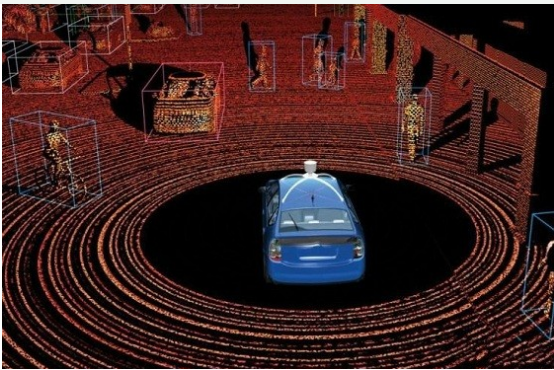What is the mainstream sensor technology in cars?
Unmanned driving technology is actually very mature now. At the current level of technology, if the complex traffic conditions of a large city are turned into a laboratory-specific pattern, there are vehicles with unified standards and pedestrians in normal conditions in the scene Then, without a steering wheel, a car that will automatically travel all the way will be available now.
The problem lies in how a car can know the complex traffic conditions in reality, and how it can be as flexible as human eyes and brains. The key lies in the need to cooperate with a variety of sensors. They will eventually pass the monitored data to high-precision processors, identify roads, signs and pedestrians, and make decisions such as acceleration, steering, and braking.

In the part of intelligent perception and recognition, on-board optical systems and on-board radar systems are the most important to ensure driving safety. Currently, the mainstream sensors used for surrounding environment sensing are LiDAR, millimeter wave radar, and vision Three sensors.
Lidar
By scanning the laser light reflected from an object to determine the distance of the object, a 3D environment map with a centimeter accuracy can be formed, so it plays an important role in ADAS (Advanced Driver Assistance System) and unmanned driving system. From the point of view of the current on-board lidar, mechanical multi-beam lidar is the mainstream solution, but the factor of high price has not been popularized yet.
In addition to the deployment of millimeter-wave radar and video sensors on the Baidu driverless car body that was successfully tested on December 10 last year, a 64-bit laser with a relatively large volume worth more than 700,000 yuan was placed on the roof Radar (VelodyneHDL64-E), Google also uses the same high-end configuration lidar. The pros and cons of the car lidar system mainly depends on the performance of the 2D laser scanner. The more the laser transmitter harness, the more cloud points collected per second. However, the more wiring harnesses, the more expensive the lidar is.
Taking Velodyne's products as an example, the price of a 64-wire lidar is 10 times that of a 16-wire beam. In addition to the high cost of lidar, its performance in smoke media and rain and snow weather is generally limited.
However, as a core sensor, low-cost solutions will accelerate the arrival of driverless driving. At present, the manufacturers of high-precision automotive lidar products are mainly concentrated abroad, including Velodyne, Quanegy in the United States, and IBEO in Germany. Domestic lidar products are currently relatively backward. Millimeter wave radar
Millimeter wave refers to the electromagnetic wave in the frequency range of 30-300GHz (wavelength is 1-10mm). The wavelength of millimeter wave is between centimeter wave and light wave. Therefore, millimeter wave has the advantages of microwave guidance and photoelectric guidance. Compared with the centimeter-waveguide head, the millimeter-waveguide head has the characteristics of small size, light weight and high spatial resolution. Compared with optical seekers such as infrared, laser, TV, etc., the millimeter-waveguide has a strong ability to penetrate fog, smoke, and dust, and has the characteristics of all-weather (except heavy rain) all-weather, which can be produced by the role of lidar Complementary. In addition, the anti-jamming and anti-stealth capabilities of millimeter-waveguide seekers are also superior to other microwave seekers.
The disadvantage is that the detection distance of millimeter-wave radar is very limited due to the wavelength, and it cannot sense pedestrians. Lidar can accurately model all obstacles around it. In order to overcome the shortcomings of different shortcomings, car companies must combine these sensors together.
At present, millimeter wave radar is also the standard sensor of the intelligent car ADAS system. According to the current mainstream classification, millimeter wave radar can be divided into 24GHz radar and 77GHz radar. With reference to its characteristics, usually the vehicle detection around the vehicle uses 24Ghz, and the vehicle detection in front uses 77GHz. Judging from China's actual national conditions and chip R & D progress and other industry characteristics, within the next three years, 24GHz millimeter wave radar still has market space in China. Looking at the world, the large-scale application of China's 77GHz millimeter-wave radar will be pushed back slightly.
Due to the function of ADAS, it is often bundled and sold through sensors + processors. The chips and algorithms of domestic automotive millimeter wave radar systems still mainly rely on imports, and the cost is very high. Accelerating the development of domestically produced 77GHZ millimeter-wave radar chips and applying them in vehicles as soon as possible will be an opportunity for China's automotive millimeter-wave radar industry. Professor Bai Jie of the School of Automotive Engineering of Tongji University believes that millimeter-wave radar is more innovative and has more potential market space and more opportunities than the fierce competition in cameras.
If you want to know more, our website has product specifications for sensors, you can go to ALLICDATA ELECTRONICS LIMITED to get more information

